This Sourdough Discard Dutch Baby or German Pancake has a crispy outer crust and a soft custardy middle with a slight sourdough tang.
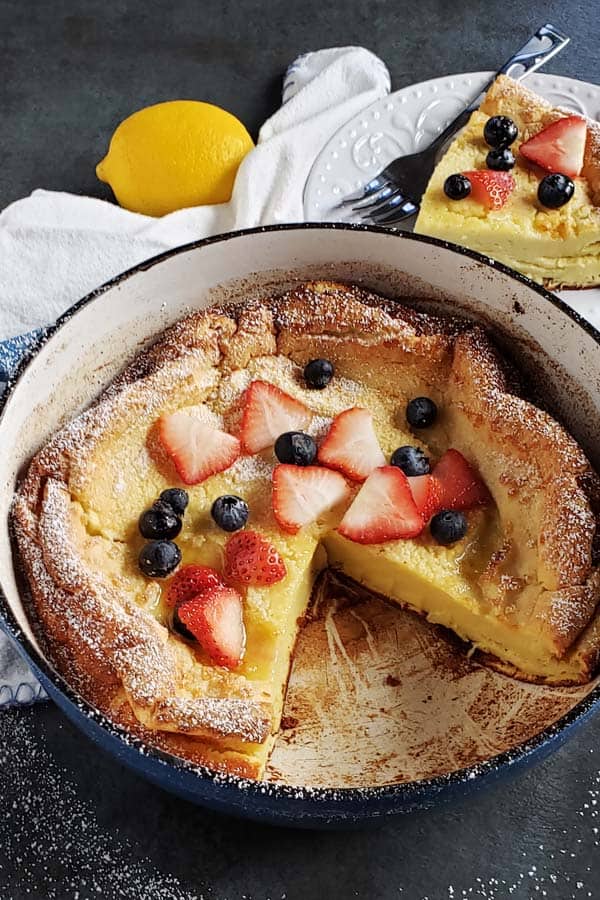
A Sourdough Dutch Baby is a great way to use sourdough discard and makes a quick easy breakfast that can be customized with a variety of toppings.
Need some more sourdough discard recipes? Try one of these: Sourdough Tortillas, Baked Sourdough Chicken Tenders, Sourdough Dutch Baby, Sourdough Blueberry Scones, Sourdough Cheese Scones, Sourdough Oatmeal Pancakes, and Sourdough Pumpkin Bread.
Jump to:
Why You Will Love This recipe
- This Dutch baby is so easy to make. The blender does all of the hard work.
- Easily customize the Dutch pancakes to pair it with your favorite sweet or savory toppings.
- You can use either sourdough discard or active sourdough starter.
What is a Dutch baby?
A Dutch baby, sometimes called a German pancake, has thin crispy puffed-up edges and a thicker custardy center. Dutch babies puff up as they are baked in a hot cast iron skillet or metal pan and deflate once they are removed from the oven. They can be savory or sweet.
Recipe Ingredients
You will need the following ingredients to make this Sourdough Dutch Baby.

Eggs: Use large room temperature eggs.
All-Purpose Flour: No special flours are necessary for this Dutch baby. All-purpose flour is perfect. For accuracy, the best way to measure the flour is by using a digital kitchen scale.
Tip: If you don't have a digital scale, spoon the flour into the measuring cup and level it with the back of a butter knife. Try not to compress the flour into the measuring cup.
Milk: Feel free to use whole, 2%, skim, or whatever dairy milk you have on hand. I have not tested this recipe with non-dairy milk.
White Sugar: Omit if making a savory dutch baby.
Salt: I add at least a pinch of salt to all of my recipes. Salt complements and intensifies the other flavors. For all of my recipes, I use Morton Kosher Salt which packs more densely than Diamond Crystal Kosher Salt. If you are using Diamond Crystal Kosher Salt you will want to double the amount of salt you add.
Vanilla Extract: Omit if making a savory dutch baby.
Butter: Unsalted is preferred it does not need to be at room temperature.
Sourdough Discard: The sourdough discard adds a slight tang to the Dutch baby. The older your discard is the tangier it will be. Sourdough discard can be stored in the refrigerator for up to a month.
Over time, the acid will build up breaking down the gluten in your sourdough discard. The discard can still be used, but it will be very acidic with a strong tangy flavor that might be overwhelming.
See the recipe card for full information on ingredients and quantities.
Pro Sourdough Tip: Keep a glass jar in your refrigerator to store your sourdough discard. Continue adding to it until you have enough to make your chosen sourdough discard recipe.
Are you new to sourdough? I have plenty of information to help you on your sourdough journey.
Substitutions and Variations
I prefer to add my toppings after the Dutch baby has baked. I don't want anything weighing down the batter so that it can achieve its maximum puffiness.
For a seasonal sweet treat, top your Dutch baby with in-season fruit. Fruit can be used fresh or be lightly sauteed in butter. Top it with fresh berries, like strawberries, raspberries, blackberries, or blueberries, stone fruit like peaches, nectarines, or, plums, or sauteed sliced apples with cinnamon and nutmeg.
Lemon Juice and Powdered Sugar: Keep things really simple with just a squeeze of fresh lemon juice and a sprinkling of powdered sugar.
Traditional pancake toppings like maple syrup, whipped cream, nut butters, chocolate chips, and jams, like this Small Batch Blueberry Jam or this Roasted Balsamic Strawberry Jam are also delicious additions.
Dutch babies can also be savory. When making a savory Dutch baby omit the sugar and vanilla. After baking your Dutch baby try adding toppings like cooked sausage or bacon, cheese, sauteed vegetables, and fresh herbs.
- Fried eggs, sausage, sauteed diced bell peppers, and hot sauce
- Smoked salmon, crème fraîche, and chopped fresh dill
- Sauteed kale, crispy bacon, and Parmesan cheese
Cooking a Sourdough Dutch Baby
Most Dutch baby recipes suggest preheating your pan while the oven preheats and then pouring the batter into the hot skillet. I have had mixed results with this method.
Sometimes my pan wasn't hot enough and my Dutch baby didn't rise properly. Other times my pan and butter heated for too long and the butter burnt.
Also, I loath having to pour cold batter into a hot skillet. I always have visions of my favorite Dutch oven cracking due to thermal shock.
Then I stumbled upon this article from Cook's Illustrated. They tested different batters and cooking methods in order to create the perfect Dutch baby. Their conclusion?
Start cooking your dutch baby in a cold pan in a cold oven. This cooking method takes a bit longer but has always worked for me.
This cooking method creates tall crispy sides while still maintaining a custardy middle. As the oven warms gradually, the center begins to set and becomes thick and custardy before the pan becomes hot enough for the edge to start to puff and rise.
Step by Step Directions
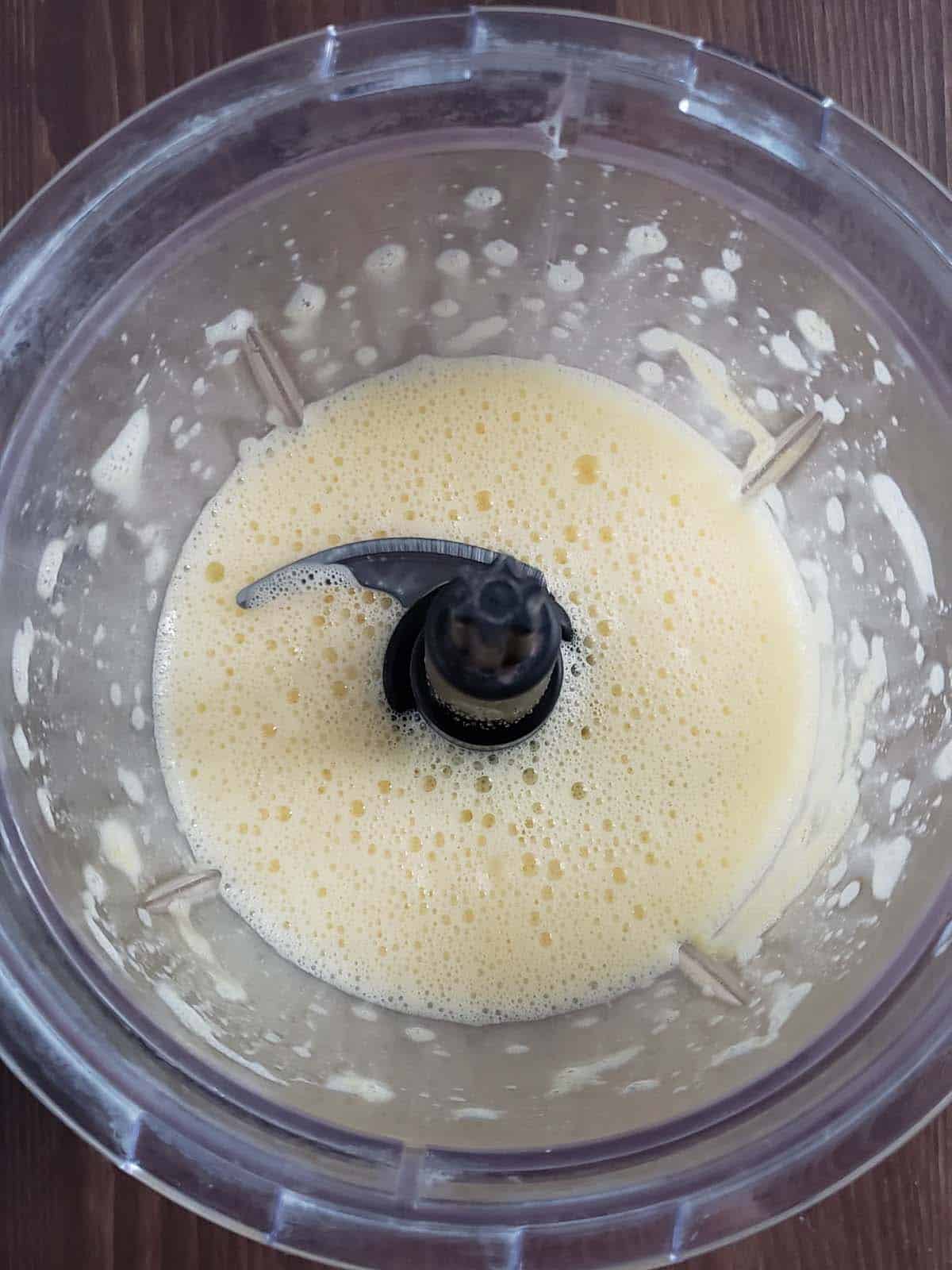
Step 1: Add the eggs to a blender and blend for about 30 seconds until light and foamy.
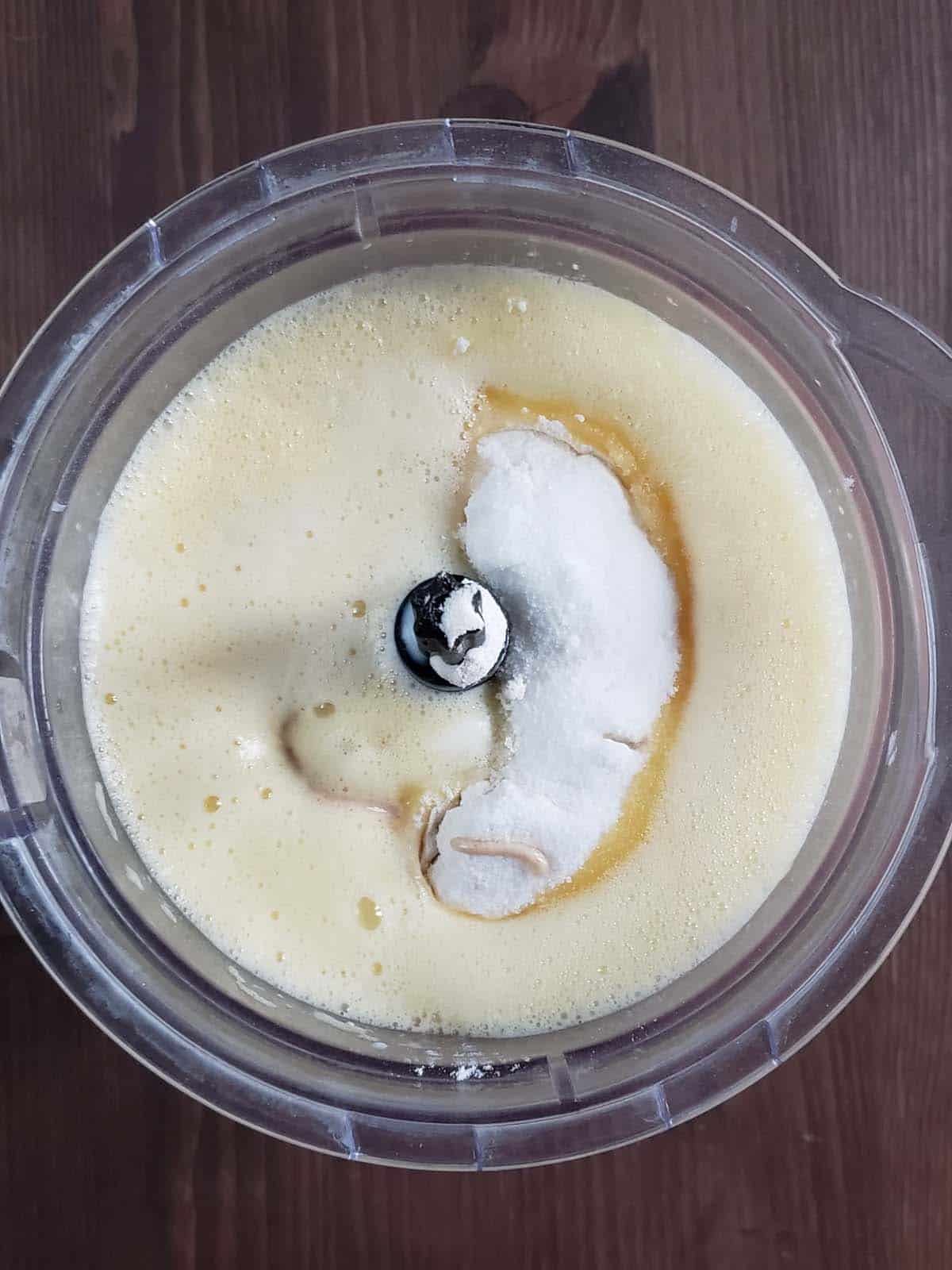
Step 2: Add the flour, sourdough discard, milk, sugar, vanilla, and salt to the blender
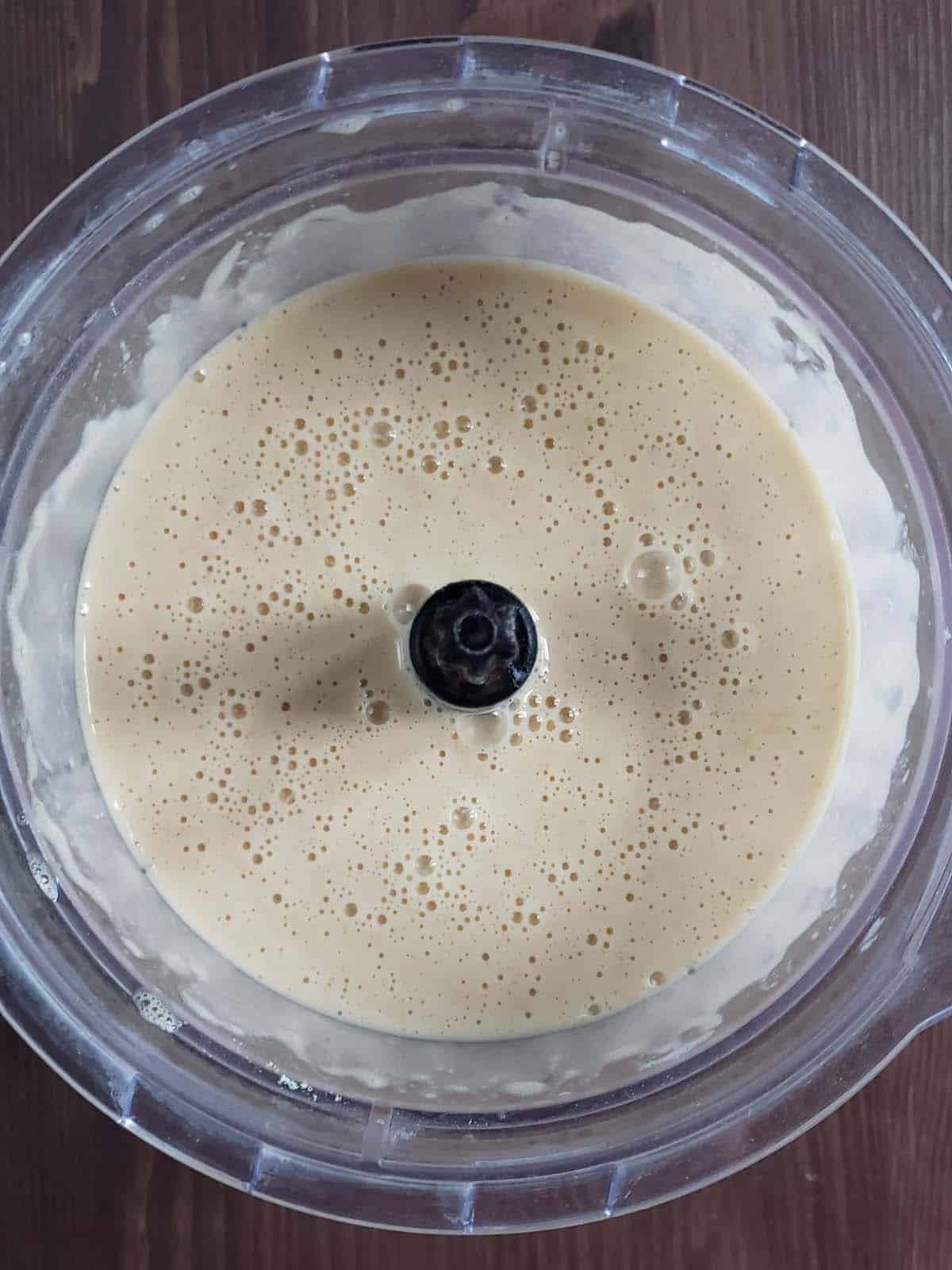
Step 3: Blend for an additional 30 seconds until smooth. Allow the batter to rest for 10 minutes.
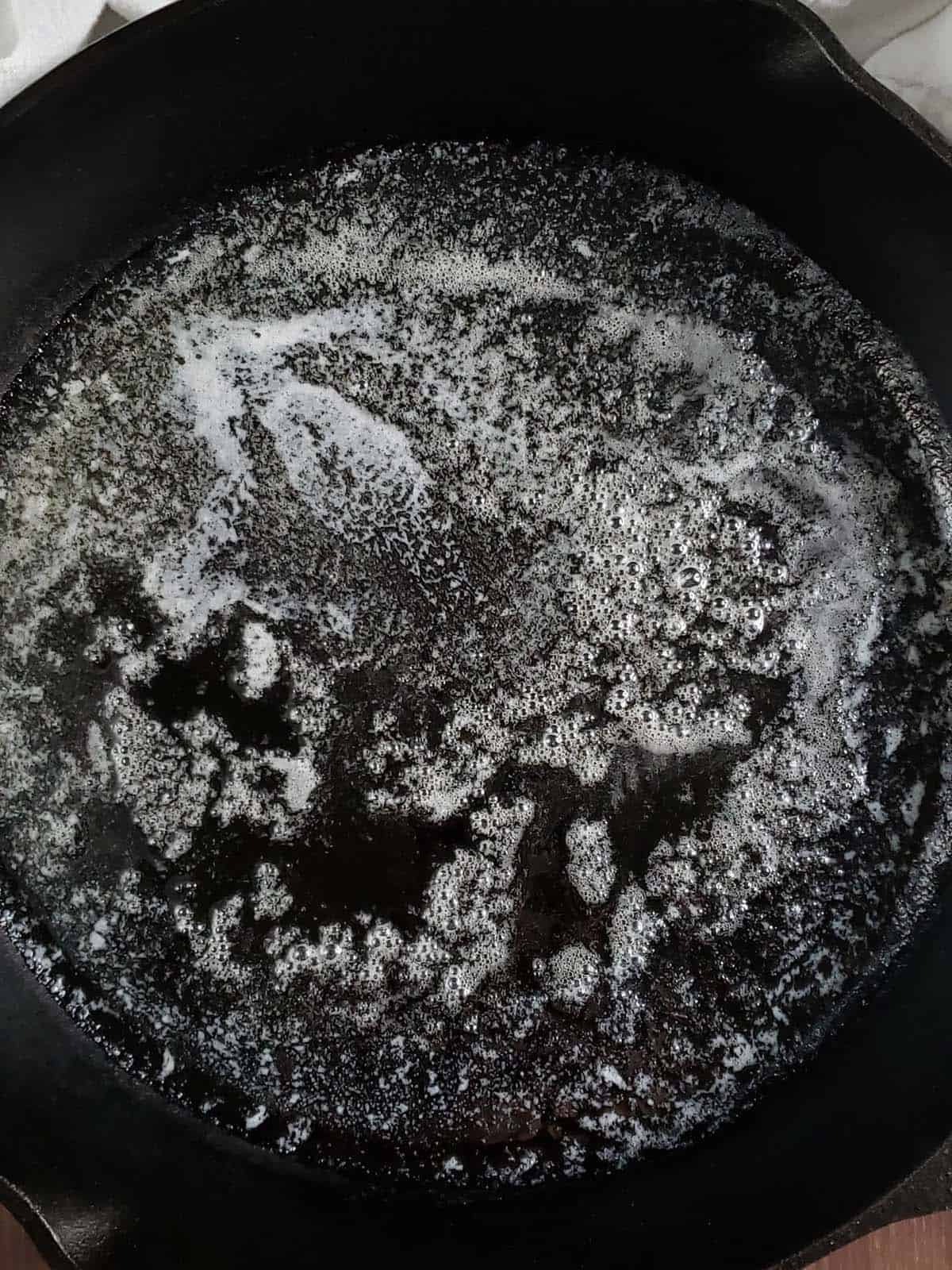
Step 4: Move the oven rack to the lower third of the oven. Melt the butter on the stovetop over medium-low heat in a Dutch oven or cast-iron pan.
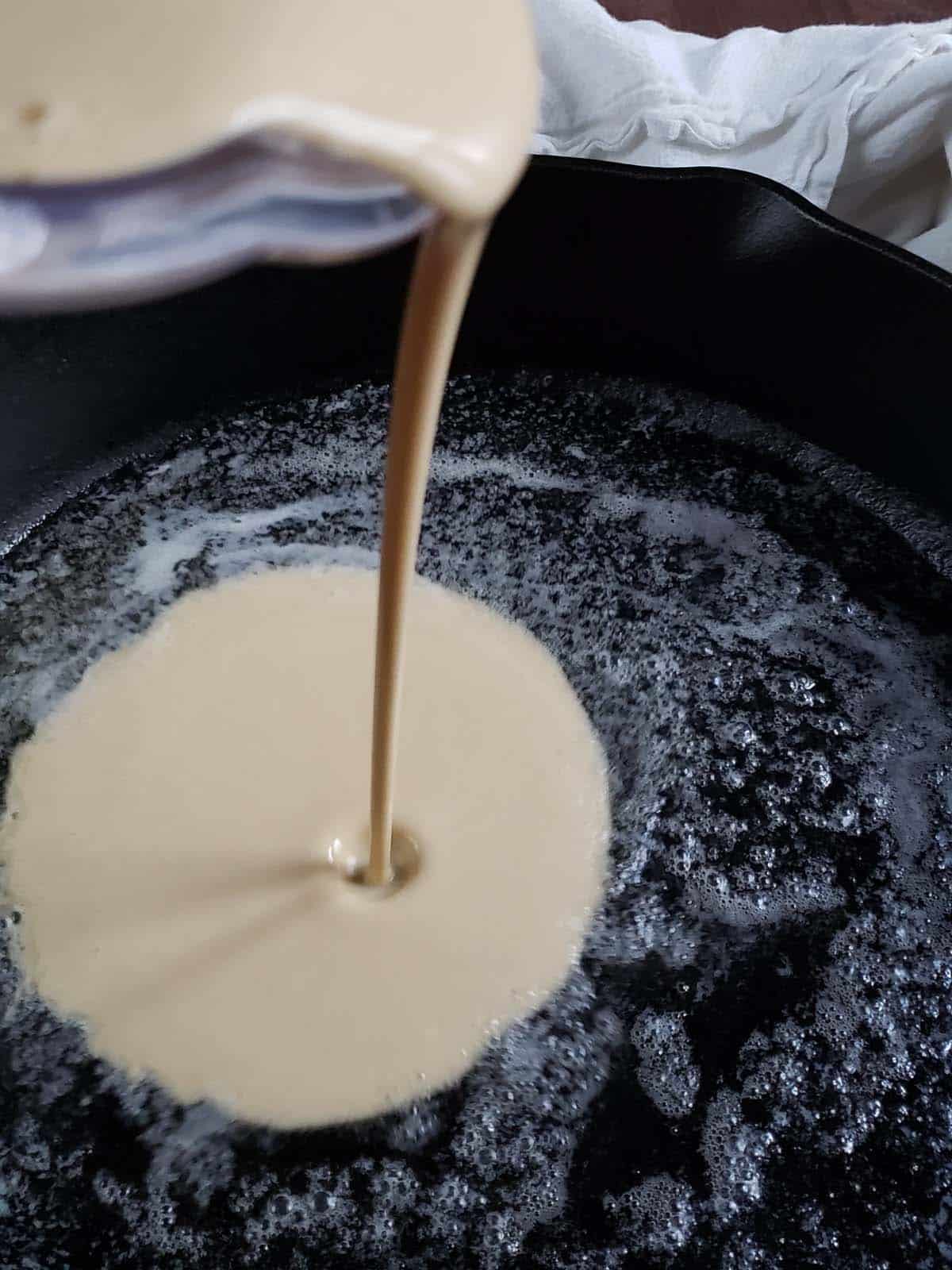
Step 5: Pour the batter into the center of the pan and place it in the oven.
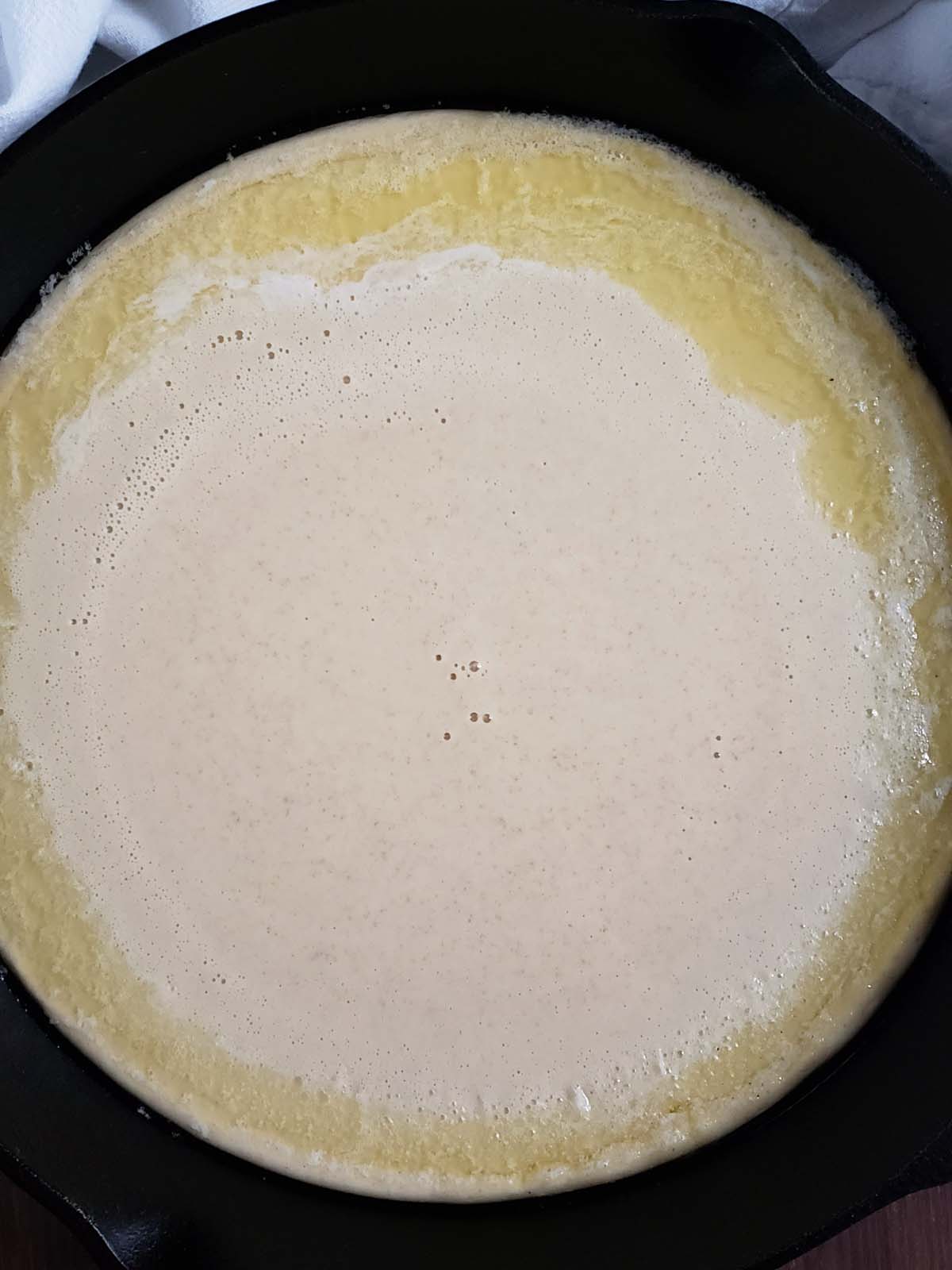
Step 6: Set the oven to 375°F (190°C). Bake for 30-35 minutes until the edges are golden brown and the center is just beginning to color. Do not open the oven while baking.
Tip: Do not open the oven while baking. Doing so could cause the Dutch baby to deflate.
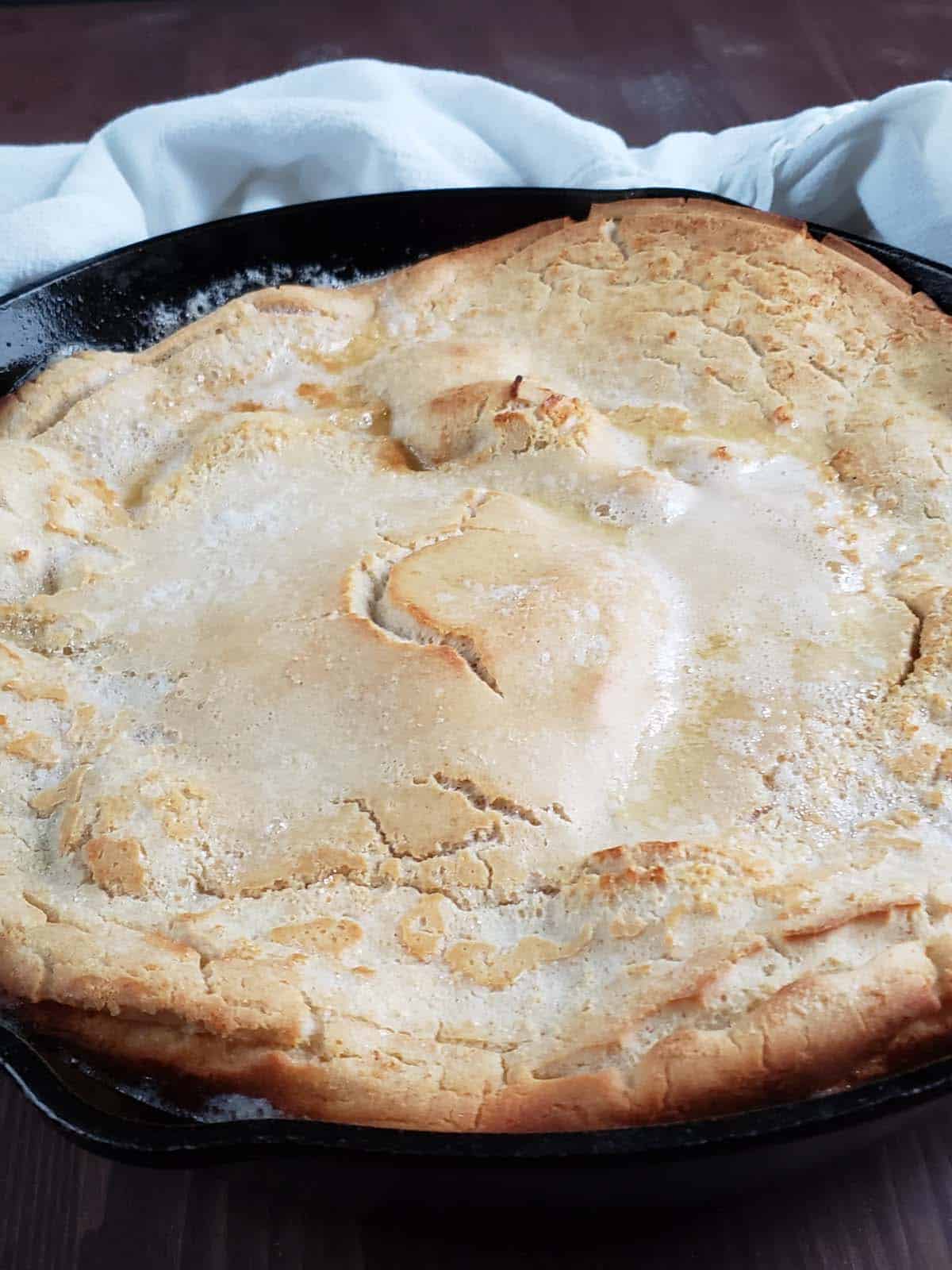
Serve warm with your favorite toppings.
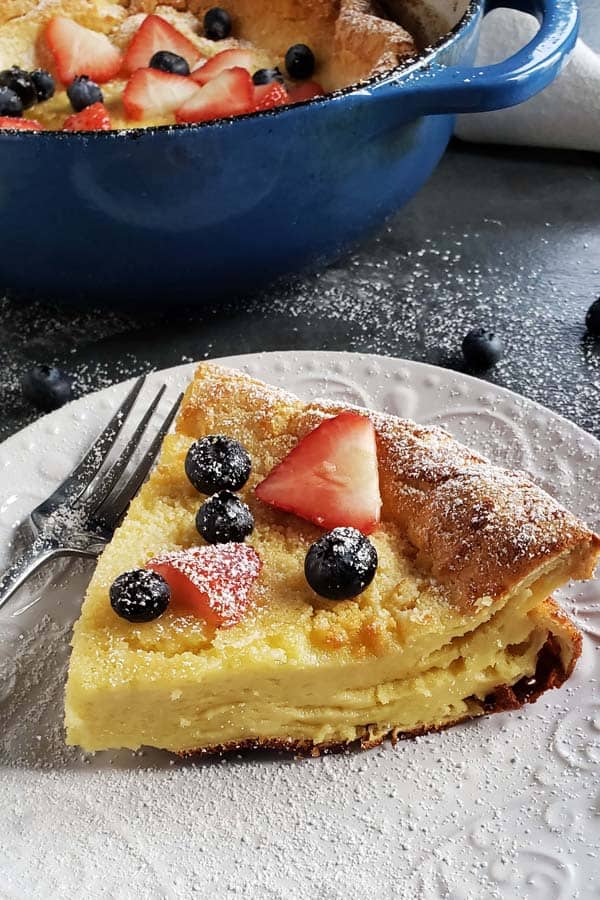
Recipe FAQs
Dutch baby pancakes taste like a cross between a crepe, a pancake, and bread pudding. The edges are thin and crispy like a crepe while the center is thicker and softer like a pancake with a little bit of custard texture like bread pudding. They have a subtle sweetness with a faint vanilla aroma.
You may have noticed there are no yeast or chemical leaveners in this recipe nor do you whip the egg whites separately. So what makes a Dutch baby rise? Steam! A Dutch baby rises as the liquid in the batter turns to steam. Heat causes the gluten and egg proteins to form into a flexible structure trapping the steam inside.
Because the edges of the pan are hotter than the center the edges of the Dutch baby rise more than the center and become crispy.
Once out of the oven, the Dutch baby will quickly collapse as the steam holding it up evaporates in the cooler air outside of the oven.
You didn't rest the batter.
Resting the batter for about 10 minutes after mixing allows time for the gluten to form. The batter needs to be flexible enough to stretch as the steam expands without breaking. After resting the batter give it a quick 30-second whirl in your blender just before pouring it into the hot pan to work in some additional air.
Refrigerate leftovers in an air-tight container for up to 5 days.
To reheat: Microwave for a minute or two until heated through.
Expert Tips
- Room-temperature ingredients will mix more easily.
- Blend the eggs first. We want to trap as much air as possible before adding the other ingredients.
- This recipe can be made with sourdough discard or active sourdough starter.
- Bake in the lower ⅓ of your oven closer to the heating element where the heat will be more intense.
- Do not open the oven while baking. Doing so could cause the Dutch baby to deflate.
More Breakfast Recipes
Thanks for Reading!
If you try this recipe, let me know! Leave a comment and rate it below! You can also snap a picture and post it on Facebook or Instagram be sure to tag me @RaspberriesandKohlrabi.
Subscribe to get more recipes and tips by email.
📖 Recipe

Sourdough Discard Dutch Baby or German Pancake
Equipment
- cast iron skillet or Dutch oven
Ingredients
- 6 large eggs at room temperature
- 1 ¼ cup all-purpose flour
- 1 cup sourdough discard at room temperature
- 1 cup milk
- ¼ cup granulated white sugar omit if making a savory Dutch baby
- 1 ½ teaspoon vanilla extract
- ½ teaspoon kosher salt
- 3 tablespoons unsalted butter
Instructions
- Add the 6 large eggs to a blender and blend for about 30 seconds until light and foamy. Add the 1 ¼ cup all-purpose flour, 1 cup sourdough discard, 1 cup milk, ¼ cup granulated white sugar, 1 ½ teaspoon vanilla extract, and ½ teaspoon kosher salt to the blender and blend for an additional 30 seconds until smooth. Allow the batter to rest for 10 minutes.
- Move the oven rack to the lower third of the oven. Melt the 3 tablespoons unsalted butter on the stovetop over medium-low heat in a Dutch oven or cast-iron pan.
- Pour the batter into the center of the pan and place in the oven. Set the oven to 375°F (190°C). Bake for 30-35 minutes until the edges are golden brown and the center is just beginning to color. Do not open the oven while baking.
- Serve warm with your favorite toppings.


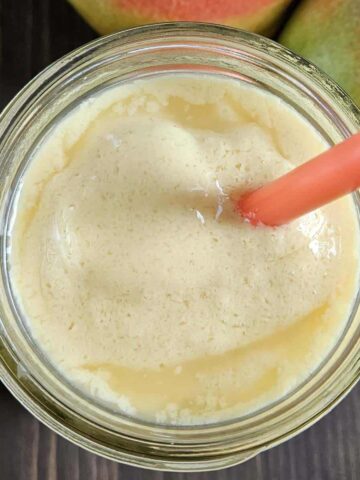
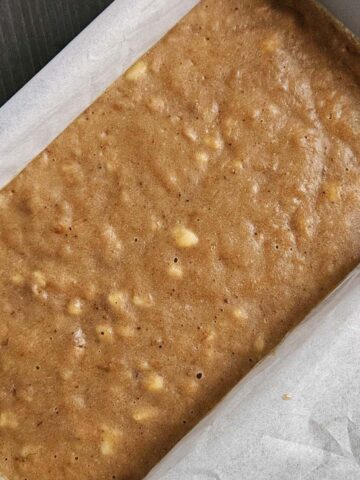
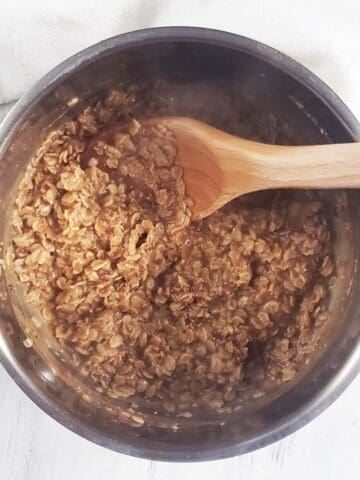
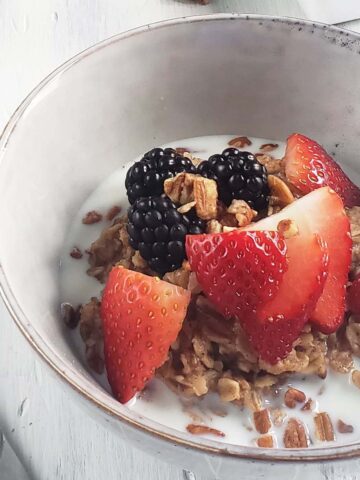

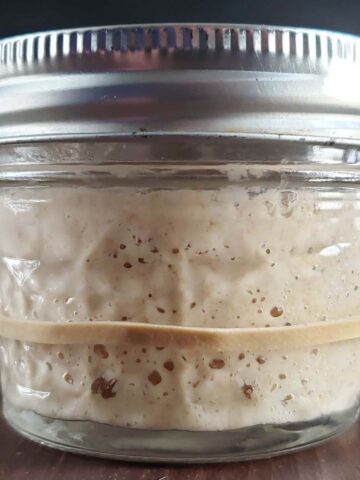

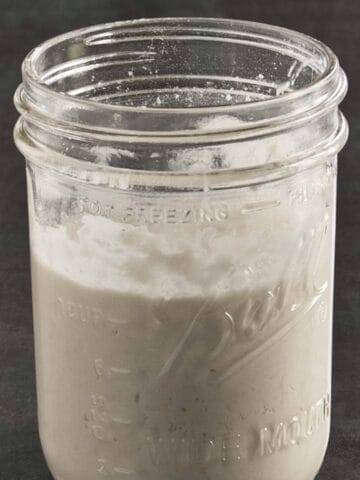
Marb says
So the cooking/baking time is started from when the oven has actually reached temperature? Would be great if you could add that because people could misunderstand (like me) since you are putting the pot in the cold oven.
Erica says
Hmm, whenever I have cooked it the dutch baby has been done about 35 minutes after I put it in the oven. I am assuming yours took a bit longer?
Cass says
Do you pre heat the oven first?
Erica Schramek says
No. Pour the batter into the center of the pan and place it in the oven. Set the oven to 375 degrees Fahrenheit. Bake for 30-35 minutes until the edges are golden brown and the center is just beginning to color. Do not open the oven while baking.
Priscilla says
Can I reduce this recipe successfully? I only have 4 eggs and want to make a smaller Baby. Thank you!
Erica says
Possibly. I haven't tried it. If you do you will also want to use a smaller pan. There won't be enough batter for the edges to rise if you reduce the recipe and still use the larger pan.
BettyJo says
My new favorite Dutch Baby recipe! Cook's Illustrated/America's Test Kitchen have never let me down with their researched advice, so I knew it was going to be good. It was even better than expected. Plus, it came right out of my cast iron pan, which is far better than my previous recipe ever did. Thank you!
Erica says
Thank you so much. I am happy you enjoyed the recipe.
Rosalie says
I made it as a savory Dutch Baby with sundries tomatoes, mushrooms and onions with cheese on top. It was doughy and seemed really heavy. Probably will not make this again.
Erica says
Can I ask did you add the toppings before or after baking? Many times toppings added before baking can weigh the dutch baby down and prevent it from rising.
Dustin says
I have never tried a dutch baby before, this recipe looks very interesting.
I don’t really care for sweet breakfast, so I think I would make this a savory pancake 🙂
Any recommendations for savory ingredients to add?
Erica @ Raspberries and Kohlrabi says
If you scroll up about three sections above the recipe, you will see a photograph of a dutch baby with a fried egg on top. Below that photograph, I list a couple of different savory topping options. If you want some other ingredients to add to the batter, I would stick with some fresh herbs. Anything heavier might inhibit the rise.
Muna Kenny says
What a great way to start the day! I never had a dutch baby pancake with sourdough, I would love to try it 🙂
Erica @ Raspberries and Kohlrabi says
I really hope you like it. They are delicious and there are so many topping variations.